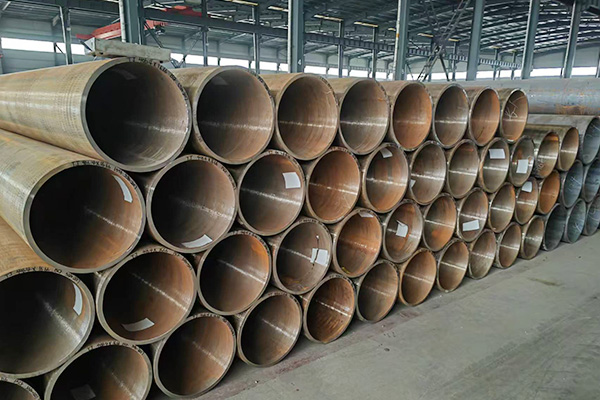
The Role of Steam Pipeline Tubes
In facilities where heat and pressure are critical to production, the choice of piping material directly impacts safety and performance. Among many options, the steam pipeline tube stands out as an indispensable component. Built under the API 5L standard and using X46 steel, it offers the resilience and reliability required for demanding steam systems.
This article reviews the defining features of steam pipeline tubes and highlights how they serve multiple industries, from power generation to food processing.

Core Characteristics of Steam Pipeline Tubes
1. Adherence to API 5L Requirements
Pipes designed in line with API 5L specifications are known for consistent quality and dependable mechanical performance. The X46 grade in particular provides the strength needed for secure steam transport.
2. Mechanical Strength of X46 Steel
The X46 material ensures solid yield and tensile strength. This allows steam pipeline tubes to resist mechanical stress, preventing collapse or rupture when exposed to heavy operational loads.
3. Thermal and Pressure Stability
Steam distribution often involves extreme temperatures and pressures. The steam pipeline tube maintains its form and stability in these conditions, making it a safe and efficient choice.
4. Resistance Against Corrosion
Industrial operations frequently expose pipelines to harsh media. Thanks to the balanced composition of X46 steel, steam pipeline tubes retain durability while resisting common corrosion issues.
Where Steam Pipeline Tubes Are Applied
Energy Production
In thermal power stations, steam must travel securely from boilers to turbines. API 5L X46 steam pipeline tube provides the strength and reliability needed to ensure smooth power generation.
Oil and Petrochemical Processing
Steam plays an important role in refining and petrochemical facilities, where it is used for heating, distillation, and cleaning. A sturdy steam pipeline tube guarantees process safety and operational continuity.
Chemical Manufacturing
High-pressure steam is essential in many chemical processes. Tubes manufactured to API 5L X46 standards withstand aggressive conditions, making them a trusted solution.
Food and Beverage Operations
Applications like sterilization, cooking, and cleaning require hygienic steam. Quality steam tubes ensure purity and prevent process contamination.
Benefits of API 5L X46 Steam Pipeline Tube
·Extended Lifespan – Strong resistance against wear and stress.
·Safety and Reliability – Withstands pressure surges without risk of rupture.
·Operational Efficiency – Fewer interruptions and reduced maintenance needs.
·Cross-Industry Usability – Suitable for diverse steam-related applications.
·International Standardization – Compliance with API 5L ensures consistent quality.
Selecting the Appropriate Steam Pipeline Tube
Choosing the right steam pipeline tube requires evaluating the system’s operating pressure, temperature range, and exposure to corrosive environments. Ensuring compliance with API 5L X46 criteria gives users confidence in durability and safety, while supporting long-term cost efficiency.
Conclusion: Steam Pipeline Tube as a Cornerstone
From power plants to food processing facilities, the steam pipeline tube is an essential asset. Its API 5L X46 classification combines high strength, thermal resistance, and corrosion protection, making it a dependable option for heavy-duty applications.
When reliability and compliance are priorities, the steam pipeline tube remains the material of choice for transporting steam safely and efficiently.
References
GB/T 7714:Venegas V, Caleyo F, González J L, et al. EBSD study of hydrogen-induced cracking in API-5 L-X46 pipeline steel[J]. Scripta materialia, 2005, 52(2): 147-152.
MLA:Venegas, V., et al. "EBSD study of hydrogen-induced cracking in API-5 L-X46 pipeline steel." Scripta materialia 52.2 (2005): 147-152.
APA:Venegas, V., Caleyo, F., González, J. L., Baudin, T., Hallen, J. M., & Penelle, R. (2005). EBSD study of hydrogen-induced cracking in API-5 L-X46 pipeline steel. Scripta materialia, 52(2), 147-152.





